There is a lot of talk of Chinese companies as being copycats of other manufacturers, but I want to take the opportunity to shine the spotlight on a pen that many revere, but may be unaware of its origins.
The Sailor Realo is a fantastic pen, and my own personal favourite from Sailor’s lineup. It is the only modern Sailor pen that is not a cartridge/converter pen, and, through the various store exclusives, is available in a variety of attractive finishes.
Although these Realos are quite a bit pricier than the Profit 21 1911/Pro Gears, finishes are no less striking. I think that the clear ink window in contrast with the colourful bodies that I tend to go for makes for striking visuals.
However, the Realo design is entirely unoriginal to Sailor. Sailor first released the Realo in 2006 in the Profit King of Pen model. As with many names from Japanese companies, the Realo name’s origins is entirely nonsensical. According to official Sailor literature, the Realo stands for “Reliance and Locus”. I’m not quite certain that Sailor understood what the word Locus means.
The original KOP was outfit with NAG grinds and apparently limited to 100 pieces, although the Japanese Pen magazine authority ShumiBun claims 500 pieces, while yet other sources claim 100 pieces for the overseas market and 500 for the Japanese market. Nonetheless, the pen was clearly a clone of the Montblanc 149, with the nib grind being what I would consider the only part truly original to Sailor.
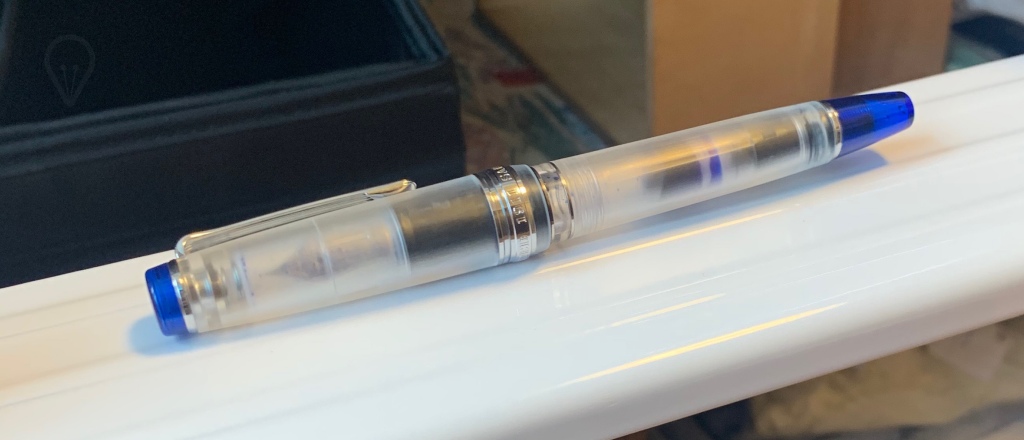
A few years later, Sailor formally introduced the Realo in the full size models. Currently, the Realo is available in the Profit 21 1911, the Pro Gear, and the Pro Gear Sigma (although this will likely be phased out with the acquisition by PLUS).
A deeper look into the Realo’s construction reveals that the new Realo is yet another copycat model. Whereas the original KOP Realo was a copy of the Montblanc 149, the new Realo seems to be remarkably similar to the Aurora 88.
Firstly, let’s discuss the exterior. Obviously, the ink windows between the two brands are extremely similar, from the shape and size down to the two metal trim bands that it they are sandwiched by. However, the clips are clearly distinct, with Aurora opting for the ball clip while Sailor has a straight regular clip (except on the Sigma model). Moreover, when capped, the ink window is visible on the Sailor, and hidden by the cap band on the Aurora. Finally, the Aurora feed extends into the ink window, creating a three dimensional look to the window. When the piston is fully extended, the feed is swallowed by piston cone. On the Sailor, the feed is standard, and therefore the ink window is clear, although the piston cone does extend all the way to the top of the ink window just like that of the Aurora.
Of course, being the maniac that I am, a comparison on the outside is just not good enough. So I did the natural thing and disassembled the pens to see what’s really going on.
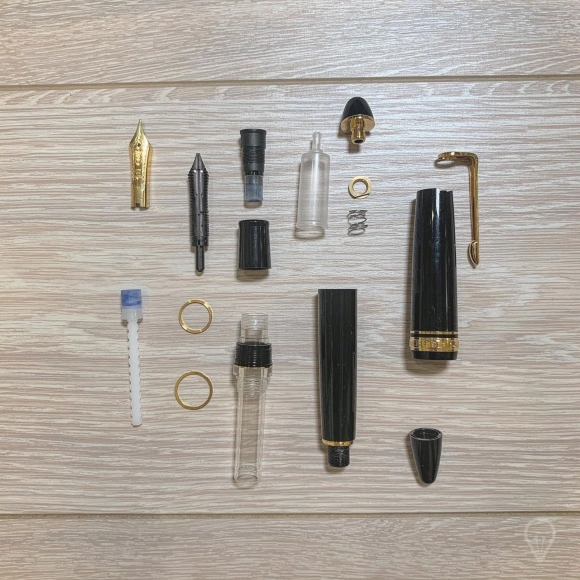
The first thing to note when disassembling this pen is that the cap finial is ridiculously difficult to remove. The construction of the cap is different to a regular Profit 21 1911/Pro Gear in its inner cap, which is attached into the finial itself through friction fit, with a spring between them to provide a cap seal. This, of course, is a copy of the Platinum Slip and Seal mechanism.
I managed to twist the finial off with a lot of elbow grease, but do be aware that the plastic part of the finial is glued onto the metal part, and if done incorrectly, the plastic part could come off, which requires reapplication of glue. Personally, I would not recommend disassembly of this unless absolutely necessary to your goals. Although I have not taken pictures, I have noticed that I was not able to put the Realo Profit 21 1911 clip onto my Realo Pro Gear, although the reverse was possible. I suspect it has to do with the way that the grooves were molded.
Following the cap, the barrel disassembly is actually quite complex. Firstly, I unscrewed the nib unit by holding the section and twisting it apart. This can be very difficult, especially if there is dry ink stuck in the pen. However, do note that the nib unit is in fact glued into the pen, so care must be exercised along with dry heat. Do not use wet heat as it deforms the plastic (trust me). Once the section and nib unit are unscrewed, you can simply push the nib unit out of the section, as the nib unit is simply keyed into the section on the top and the bottom. When reassembling, be sure to line up the keys. The nib and feed are friction fit into the unit, and pull out with ease. Although theoretically possible to remove the nib unit and section without the nib and feed installed, I have found that it is much easier to keep them in the nib unit first, and only removing after the unit itself becomes unscrewed from the pen.
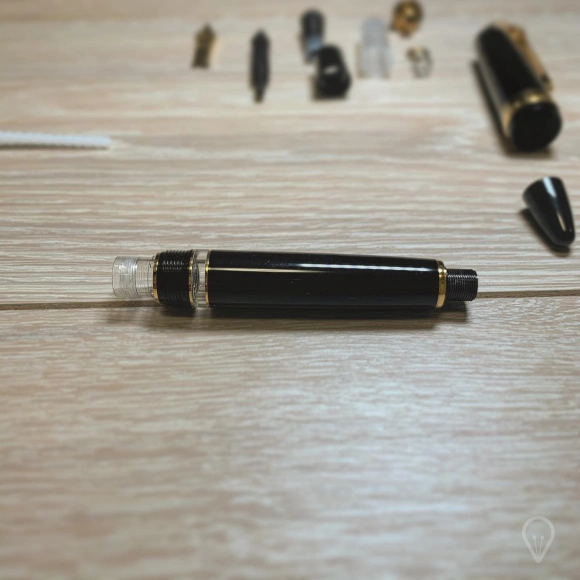
The next part is no easier. as the Realo uses a piston tube system, just as the Aurora 88, rather than a design that uses the full body as the piston walls that we see in Montblancs, Pelikans, Pilots, and virtually every other manufacturer that makes piston fillers.
In order to remove the piston tube from the barrel, one must grab the ink window tightly and unscrew with elbow grease. The tube can be unscrewed, but is often glued into the barrel, so dry heat may be required, but caution is paramount here, as the threads above the ink window are fragile and may deform if you grip the wrong place.
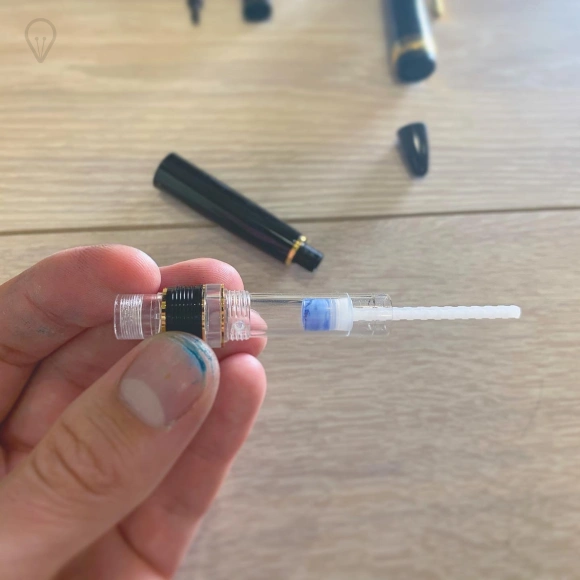
Once the piston tube is unscrewed, you can tug and pull it out of the barrel. There will be resistance, as the piston cone is quite tight in the tube, but a careful but firm pull should remove it with ease. Once that is removed, you can simply unscrew the piston knob to free the piston cone and the piston gear.
The piston connector is a part that I have been unsuccessful in removing. The piece is tightly glued to the body, and the plastic used by Sailor to make the connector is soft and fragile. In this aspect, Aurora’s construction is far superior to Sailor’s.
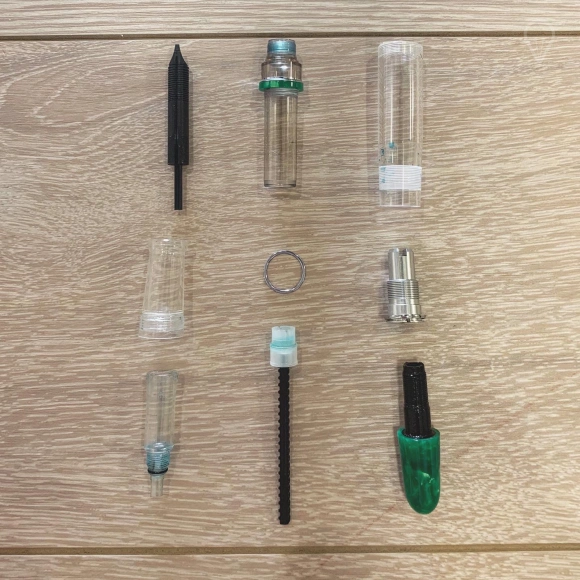
That being said, please refer to the above image to see how shockingly similar the Aurora 88’s disassembly is. The construction is virtually the same, with some minor differences.
As I see it, the Sailor Realo is essentially a carbon copy of the Aurora 88, which is disappointing because it means that all of the flaws that come with the Aurora 88 also come with the Realo. The most annoying flaw is the piston cone, which traps ink on its side and makes it extremely difficult to get a full clean without the use of an ultrasonic cleaner.
A side by side comparison reveals how lacking in creative design the Sailor team was when creating the Realo, and rumours have it that the failure rate of Realos are at a shocking 50%.
With that being said, Sailor and Pilot are the only Japanese manufacturers making piston fillers, and Pilot pens are unbearably drab when it comes to body design. On the other hand, Sailors are undeniably the best at creating coveted materials for their retail partners, so while Pilot has a better piston design and the Custom Heritage 92 is, in my opinion, a better pen over all, I suspect that my Realos will outnumber by CH92s in the long run.
I hope that Sailor will continue to make these store exclusive Realos to spice up the market. I, for one, will be on the look out for any special versions of this copycat pen.
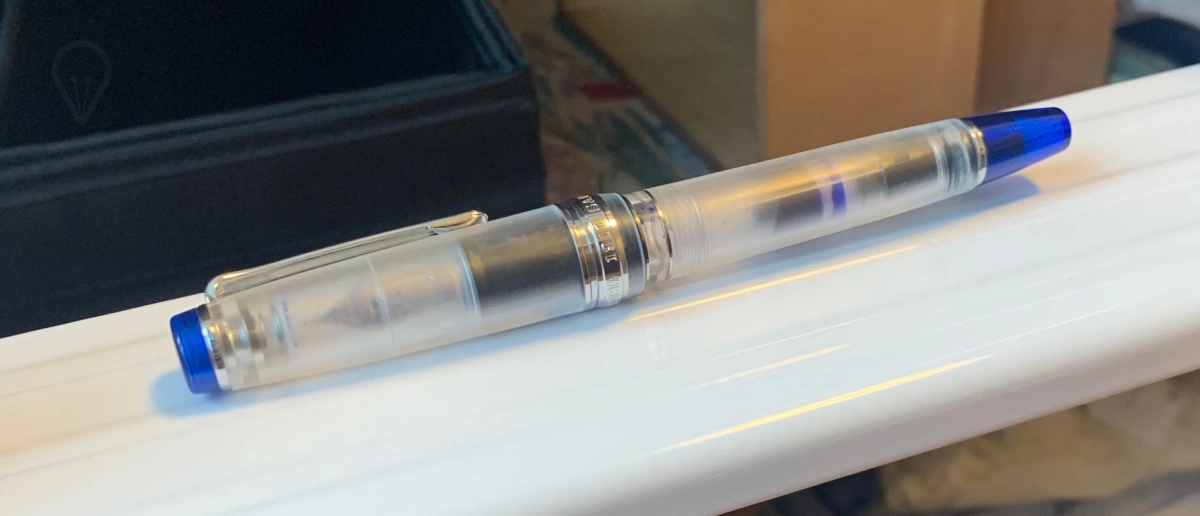
10 replies on “The Anatomy of a Sailor Realo vs an Aurora 88”
Watching the auctions of the King of Pen realos, I have watched the numbering.
I believe there were 500 released in Japan, and 100 for overseas. So 600 total made.
LikeLiked by 1 person
I do believe that you are right!
LikeLike
If only Pilot cared enough about fountain pens to start adding a little dye to their pens one a year… The VP and CH74 being the only ones offered with any spice is weak sauce. I love my Pilot nibs but I am buying more Sailors because there are more options over time…
LikeLike
You are 100% right. The reason is because Japanese consumers prefer cartridge pens…..
LikeLike
[…] The Anatomy of a Sailor Realo vs an Aurora 88 – Tokyo Station Pens […]
LikeLike
Given your penchant for pen surgery – is the oiginal Realo also this kind of piston filler captured converter mix or is the architecture of that one different?
LikeLiked by 1 person
I wouldnt call this a captured converter. All the parts, piston rod, spindle, connector, are still of a piston construction. The only difference is the inner tube. As for the original, i dont have one so I cannot say with 100% confidence but i do believe that that one is the same construction as the MB 149
LikeLike
Well… it’s sorta kinda in between right? I have seen Montblanc doing a similar thing in model 31 in fact. Ah OK, thank you for the information. If you run into one please dissect it 🙂
LikeLiked by 1 person
What an interesting article and analysis. This is a great service to the community. I love this. I have many realos and love them all. And Aurora optimas. Some people appear to have had bad luck with the optimas cracking in half at the window joint. I feel lucky not to have experienced this (yet?). And I have never had that happen with a realo. But I also baby all my pens…
LikeLike
Thanks Dan! I have had an optima crack, and it seems to be the black plastic material which causes this rather than the Auroraloid. I had it fixed from the factory and it came back as good as new!
LikeLike